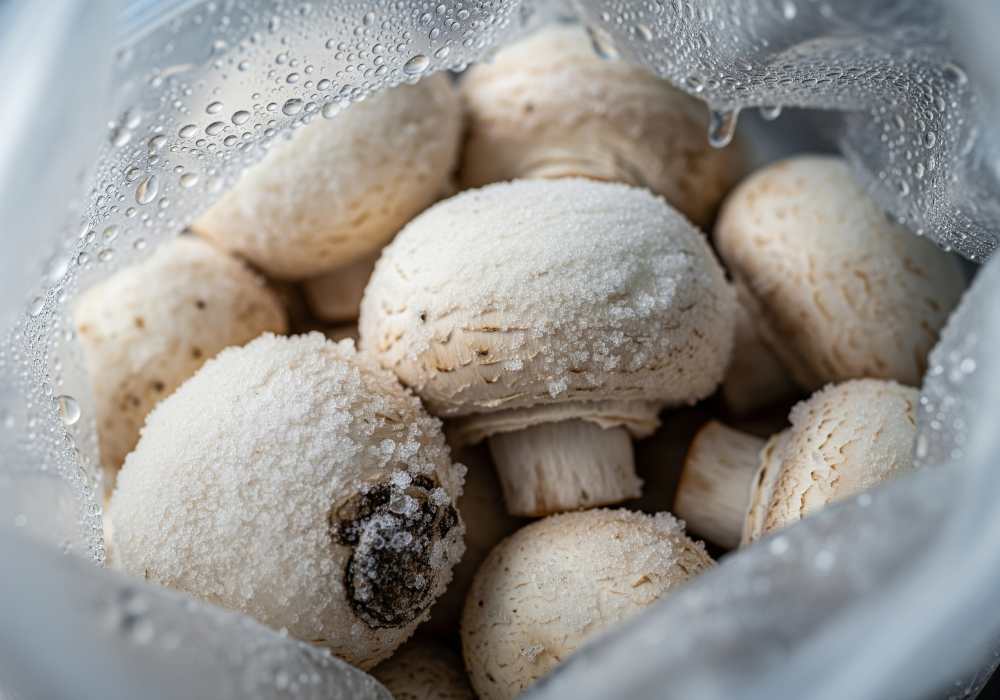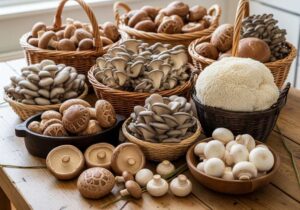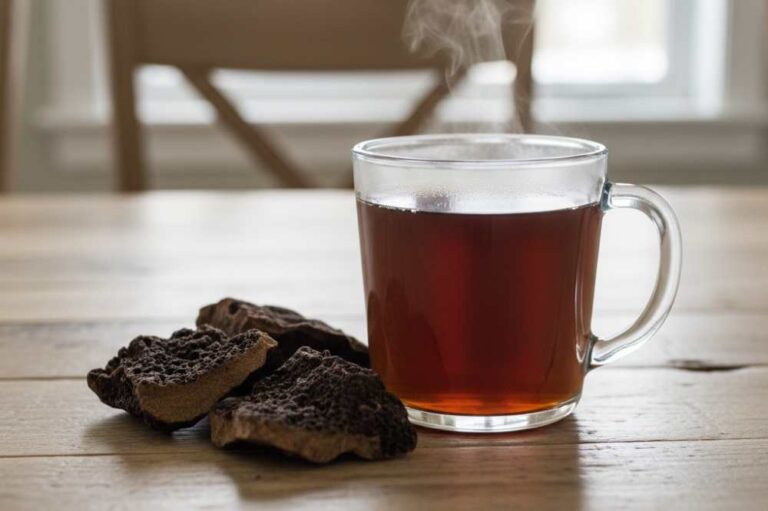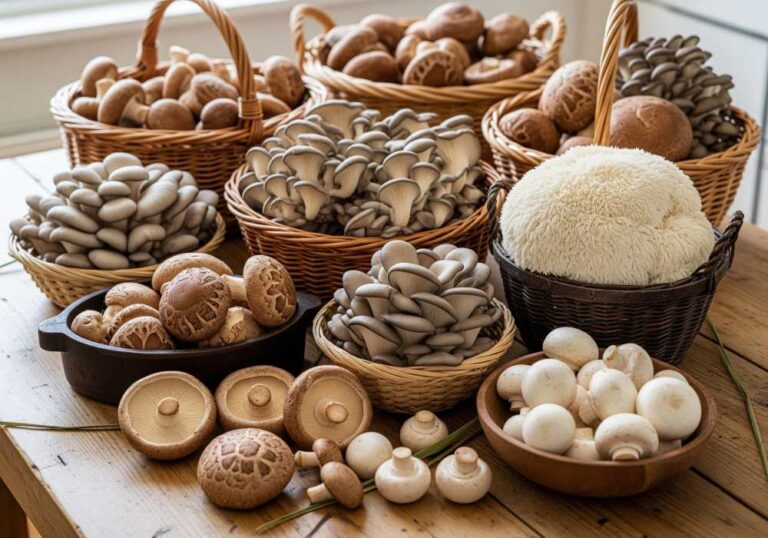Fresh mushrooms are around 85–92% water, and that water isn’t just sitting there in big open pools. It’s tucked away inside delicate networks of chitin and β-glucans, along with enzymes that stay active even after harvest. If you freeze them without proper preparation, the slow ice crystal formation will puncture those cell walls, leading to soggy, flavor-leached caps when thawed.
Freezing mushrooms the right way is less about convenience and more about preservation. We’re protecting texture, color, flavor, and — for those who care about the nutritional side — valuable bioactives like phenolics and ergothioneine. And yes, the difference between doing it casually and doing it correctly is night and day.
How Freezing Affects a Mushroom’s Built Structure
Mushrooms are fascinating on a cellular level. Unlike plants, they don’t have rigid cellulose-based cell walls. Their walls are strong yet flexible. This flexibility is why fresh mushrooms feel springy when you press them.
When freezing begins, water inside the cells turns into ice. If the process is slow (as in most home freezers), ice crystals grow large enough to rupture the delicate membranes, leaving a mushy texture after thawing. This damage isn’t just a textural issue — it can also speed up oxidation and browning. According to research published in Food Chemistry and Journal of Food Engineering1, enzymatic activity during freezing and thawing plays a huge role in discoloration and flavor degradation.
The effect isn’t uniform across species.
- Button mushrooms have a fine-pored structure that’s more prone to water migration, so they often need blanching for long-term freezing.
- Oyster mushrooms have broader hyphae that can withstand a bit more freezing stress.
- Shiitake mushrooms are denser and naturally hold texture better, even when frozen raw.
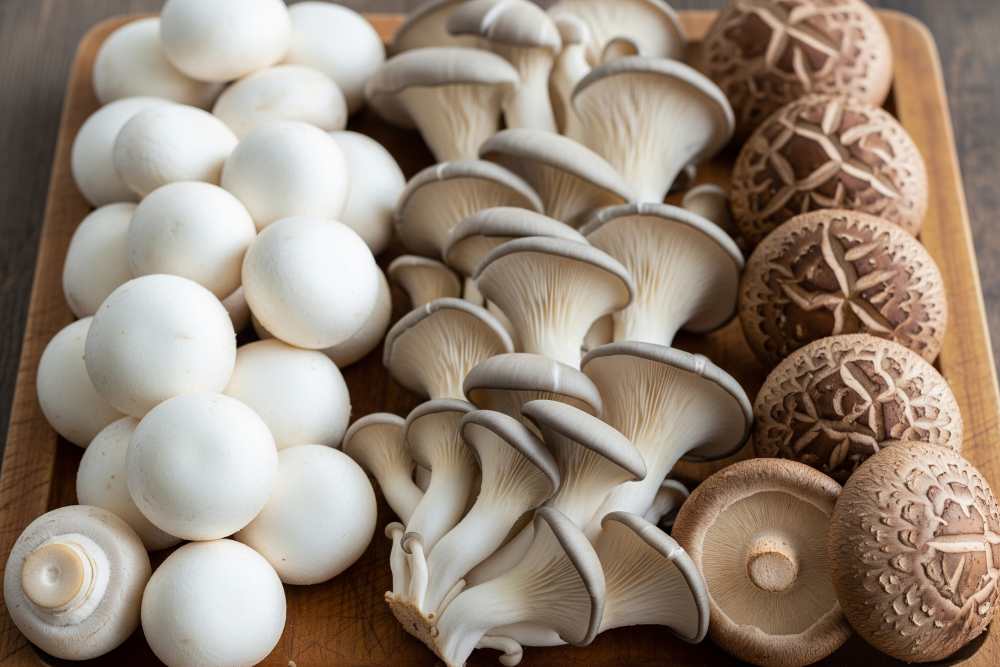
From my experience, knowing the mushroom’s build helps you choose the right freezing method — a step many overlook.
Sorting Out the Right Mushrooms for Freezing
Freshness is king. Choose mushrooms that are firm, evenly colored, and free of blemishes. Caps should be dry to the touch but not desiccated; gills should be tightly packed and clean. If you see sliminess or a strong odor, that’s a sign of bacterial activity, and freezing won’t reverse the damage — it’ll just lock it in.
Maturity matters too. Younger caps tend to have less free water and a denser structure, which helps them retain shape after freezing. Overripe mushrooms, with their stretched gills and softer flesh, tend to lose structure faster. This aligns with findings from The Influence of Frozen Storage on Some Commercial Mushrooms2, which noted higher drip loss and texture collapse in mature samples compared to immature ones.
For foraged varieties, like chanterelles or porcini, how they were handled post-harvest makes a huge difference. Dirt, moisture, and even how they were transported can influence microbial load and enzymatic activity, affecting their performance in the freezer. In my own kitchen, I’m ruthless here — if a mushroom looks past its prime, it doesn’t go in the freezer.

Pre-Freezing To-dos that Preserve Texture and Nutrients
First comes cleaning. Mushrooms act like sponges, so soaking them under running water is a fast track to waterlogged caps. Instead, I prefer using a soft brush or a slightly damp cloth to remove dirt. If rinsing is absolutely necessary, it must be quick, followed by immediate drying with a clean towel.
Trimming is equally important. Tough stem ends, bruised patches, or any insect damage (common in foraged mushrooms) should be removed. These areas not only degrade faster but can also harbor higher enzymatic activity that speeds spoilage during storage.
Cut size matters more than most think. Smaller uniform pieces freeze faster, which means smaller ice crystals, which equals less cell wall rupture. According to Food Chemistry and a study on Lactarius salmonicolor3 freeze-drying, surface area and density directly affect how much structural damage occurs in frozen fungi.
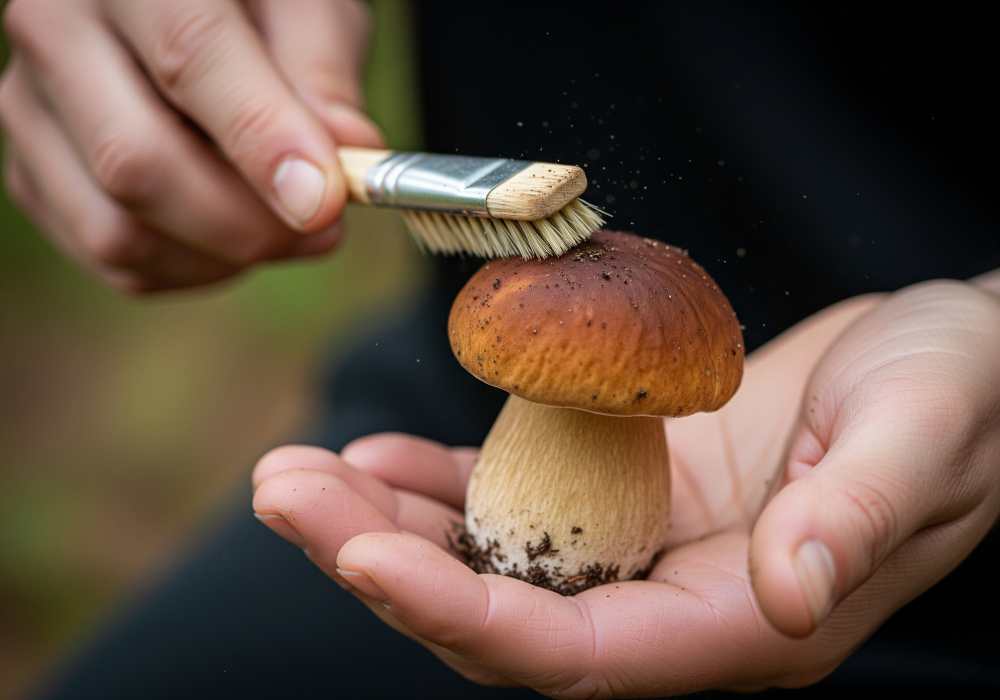
Types of Freezing and Their Pros and Cons
Every freezing method has its champions, but the right choice depends on your priorities — whether that’s shelf life, flavor integrity, or convenience.
Blanching is my go-to for maximum preservation. A quick steam blanch (about 2–4 minutes, depending on the cut) halts enzymatic activity while keeping texture intact. Steam is preferable over boiling since it minimizes nutrient leaching. Studies on commercial mushroom storage show that blanched samples retain firmness and lightness of color far better after six months in frozen storage.
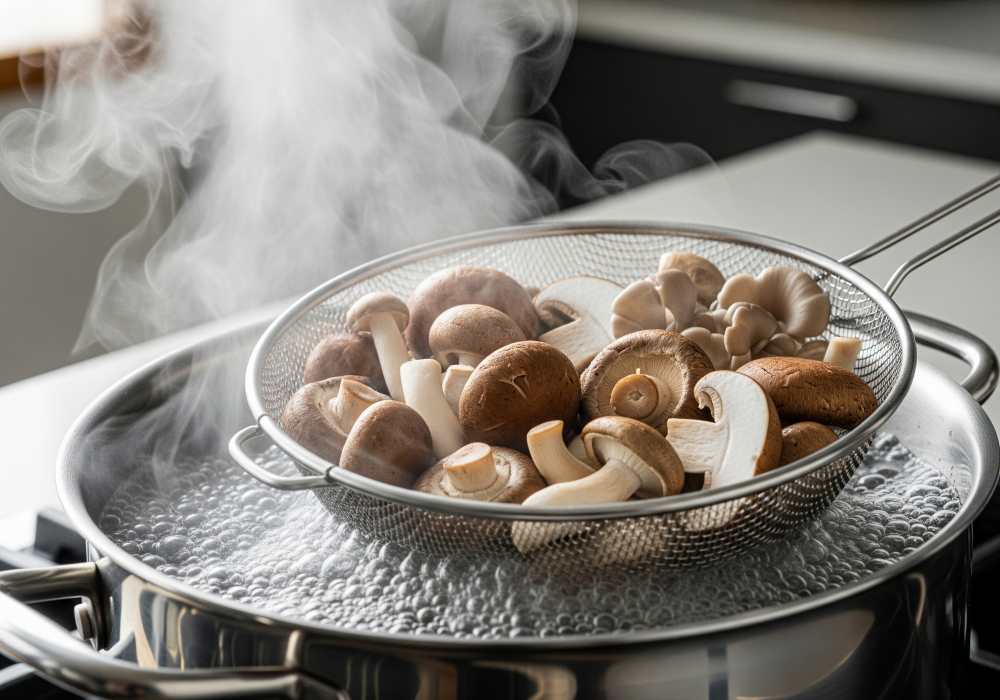
Sautéing brings a culinary advantage. By cooking the mushrooms briefly in oil or butter before freezing, you not only lock in flavor but also create a barrier against freezer burn.
The downside? Slightly softer texture after thawing, and some oil may solidify, which isn’t ideal for every recipe. Still, for mushrooms destined for pasta sauces or casseroles, sautéing first can make them taste freshly cooked.
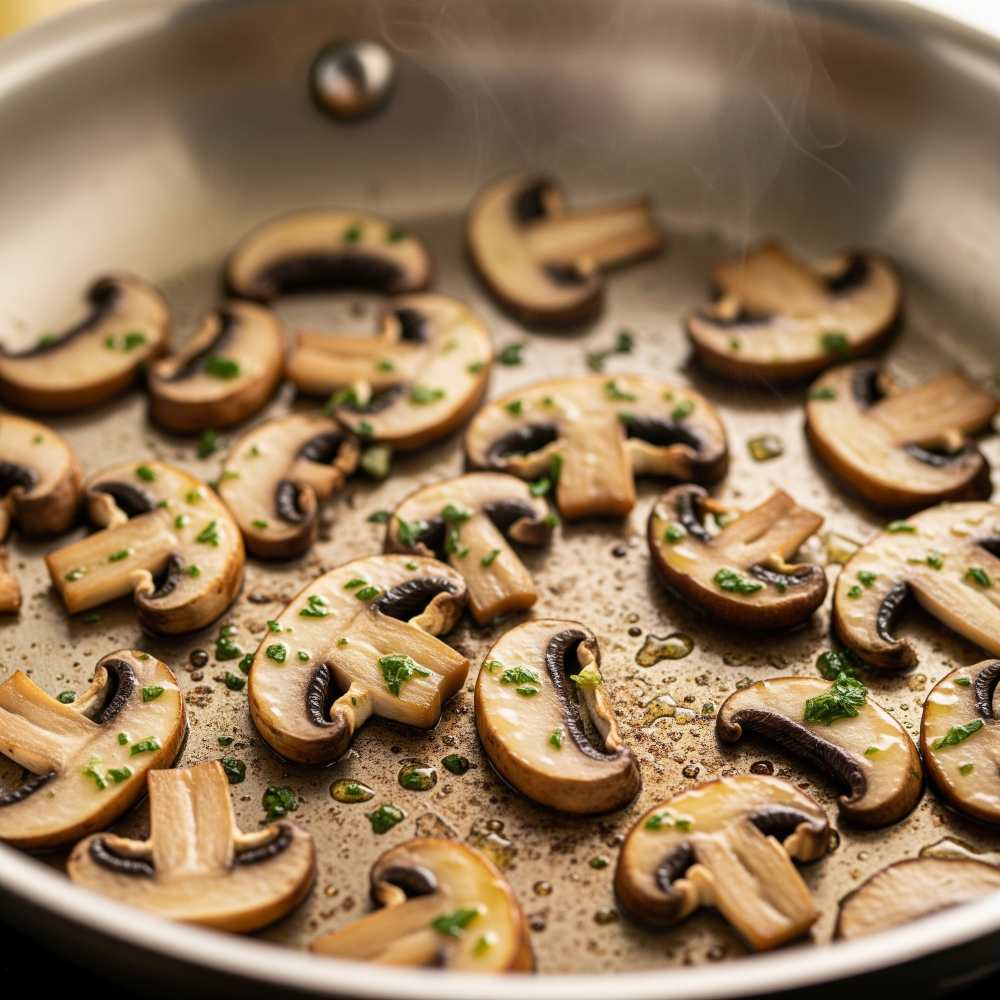
Raw freezing is the fastest option — wash, trim, pack, freeze — but it comes at a cost. Slow ice crystal growth in home freezers often leads to cellular breakdown, water seepage, and loss of springiness upon thawing. That said, dense species like shiitake or chanterelles hold up surprisingly well even when frozen raw. Many experienced cooks have already observed this in practice.
The Effects of Temperatures, Speeds, and Storage
When it comes to freezing mushrooms, speed and temperature are everything. At −18 °C (0 °F) or lower, microbial growth halts, oxidative reactions slow dramatically, and water turns to ice. But it’s the rate of freezing that determines final quality.
Slow freezing (common in home freezers) allows large ice crystals to form, tearing through mushroom cell walls. Rapid freezing or IQF (individually quick frozen) methods produce smaller crystals that cause less damage. While you can’t fully replicate IQF at home, you can mimic it by spreading prepared mushrooms in a single layer on a baking sheet, freezing them quickly, and then transferring them to airtight packaging.
Packaging is your second line of defense. Oxygen-barrier freezer bags or vacuum sealing greatly reduce oxidative chemical reaction and freezer burn. Removing excess air before sealing minimizes sublimation (ice evaporating from the surface), which leads to dried-out, leathery spots.
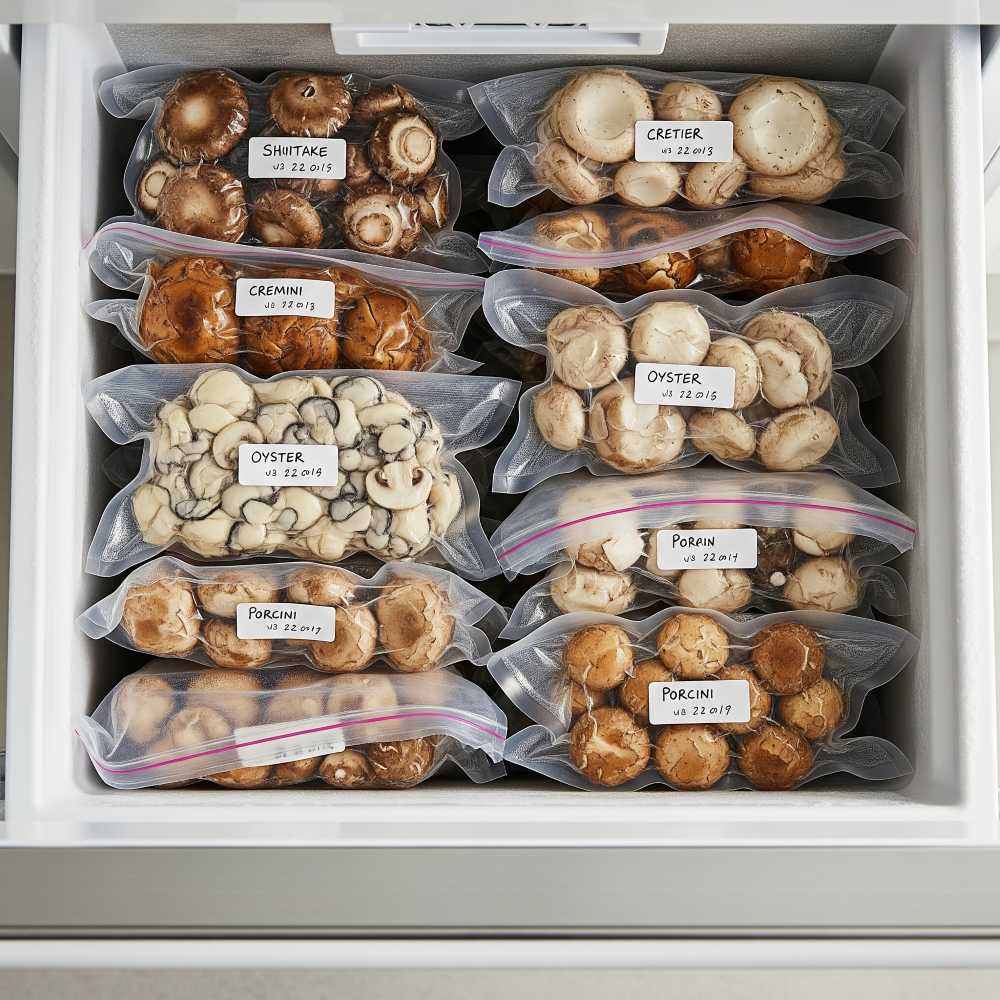
Storage time depends on the preparation method:
- Blanched: 10–12 months with minimal quality loss.
- Sautéed: 8–10 months before noticeable flavor changes.
- Raw: 4–6 months for most species.
Prolonged frozen storage, even at correct temperatures, gradually reduces phenolic content and alters flavor compounds — which is why tracking storage dates is essential.
From my own trials, I’ve learned one golden rule: the better your freezing method, the more your thawed mushrooms will remind you of their fresh selves.
Thawing and Using Frozen Mushrooms
First, what is thawing? It is the process of changing something from a frozen, solid state to a liquid or semi-liquid state. It is the opposite of freezing.
One of the biggest mistakes I see — and hear from readers — is treating frozen mushrooms like frozen meat: thawing them on the counter or in the fridge before cooking. That’s a direct path to sogginess. Once ice crystals inside the mushroom melt, the cell walls (already stressed from freezing) release their water in a rush, leaving the tissue limp and watery.
The best solution? Cook them directly from frozen. Straight from the freezer into a hot pan, soup pot, or oven. The quick application of heat helps evaporate excess surface moisture before it soaks into the cap, preserving a firmer bite. In fact, a study4 noted that direct cooking after frozen storage retained more desirable texture than slow-thawed samples.
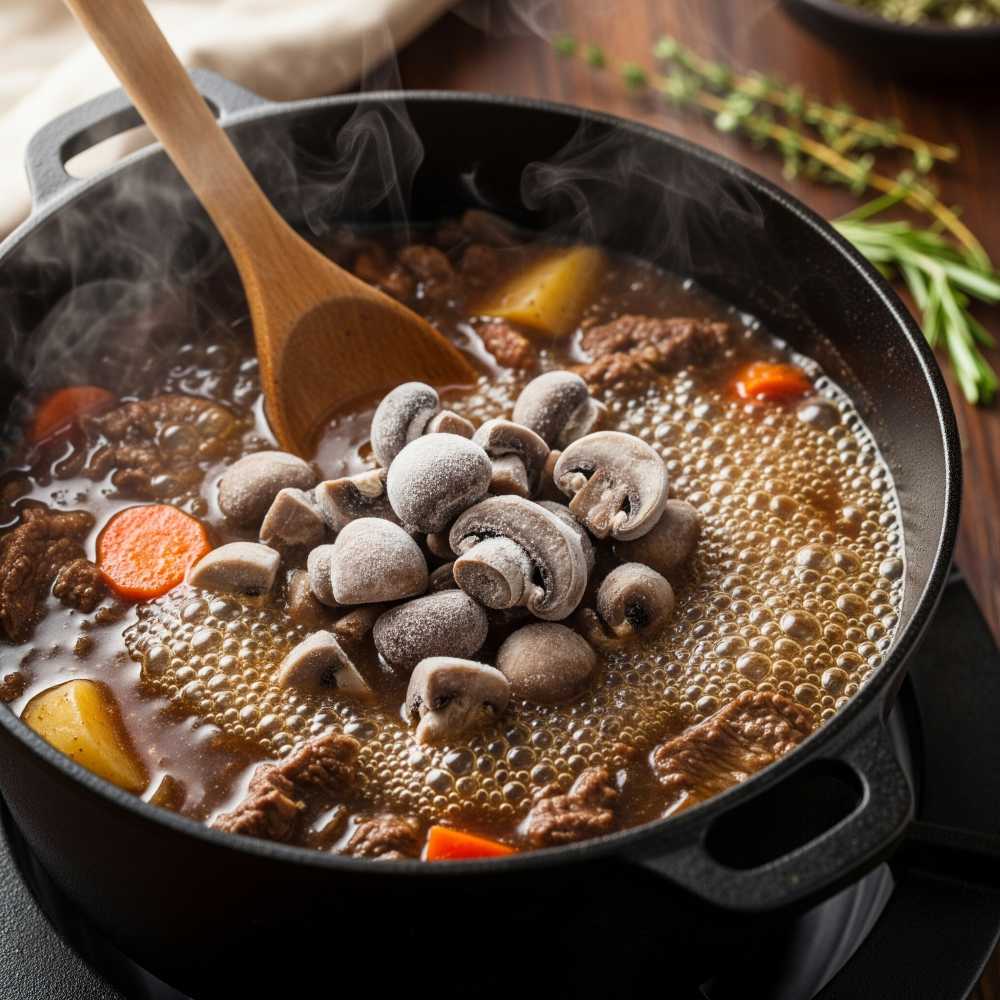
Certain preparations work better than others:
- Soups and stews: The mushrooms release their liquid into the broth, adding flavor depth.
- Stir-fries: A hot wok and high heat help caramelize quickly, offsetting water release.
- Sauces: Cooking down frozen mushrooms intensifies their umami without making the sauce thin.
Here are some soups that you can try on:
If I need mushrooms for a recipe that demands minimal moisture (like a pizza topping), I often dry-sauté them first — placing the frozen mushrooms in a pan with no oil, letting the water cook off, and then adding fat and seasonings. This flavor reactivation technique works wonders, especially for button mushrooms.
And here’s another non-negotiable: never refreeze mushrooms once thawed. Repeated freeze-thaw cycles accelerate enzymatic browning, nutrient loss, and texture breakdown — confirmed in LWT – Food Science and Technology5, where multiple thaw cycles drastically reduced both phenolic content and color stability.
Final Takeaway
From my own cooking and experimentation, I can tell you that the effort pays off every time. When you pull out a bag of perfectly frozen, neatly labeled mushrooms in the middle of winter and they sauté up with the same earthy fragrance they had the day you packed them — that’s when you know you’ve done it right.
The right way to freeze mushrooms isn’t about overcomplication. It’s about understanding their biology, respecting their structure, and applying a few precise steps to keep them as close to fresh as possible. Ultimately, you’re not just freezing food — you’re freezing a moment in its prime.
Resources:
- Zhang, L., Zhang, M., Wang, D., Mujumdar, A. S., & Chen, Y. (2024). ANN-GA optimized composite color protectant combined with magnetic field assisted freezing: Effects on the quality of mushroom (Agaricus bisporus). Food Chemistry, 453, 139713. https://doi.org/10.1016/j.foodchem.2024.139713 ↩︎
- Baston, O. (2016). The influence of frozen storage on some commercial mushrooms. www.academia.edu. https://www.academia.edu/72060185/The_Influence_of_Frozen_Storage_on_Some_Commercial_Mushrooms ↩︎
- Ongun, G. K., Özkaymak, M., Acar, B., Aktaş, M., & Dağdevi̇Ren, A. (2021). Experimental Investigation Of Freeze-Dried Kanlıca Mushroom (Lactarius Salmonicolor). Journal of Polytechnic, 26(1), 223–230. https://doi.org/10.2339/politeknik.991782 ↩︎
- Czapski, J., & Szudyga, K. (2000). Frozen mushrooms quality as affected by strain, flush, treatment before freezing, and time of storage. https://www.semanticscholar.org/paper/Frozen-Mushrooms-Quality-as-Affected-by-Strain%2C-and-Czapski-Szudyga/790da3b6e6daf56f01c9988edd47d8b7d77df1ef ↩︎
- Vardanjani, M. Y., Hamdami, N., Dalvi-Isfahan, M., & Le-Bail, A. (2024). Enhancing mushroom freezing quality using Microwave-Assisted technology. Foods, 13(17), 2805. https://doi.org/10.3390/foods13172805 ↩︎

